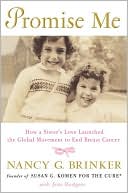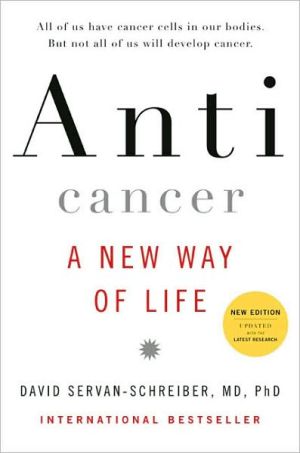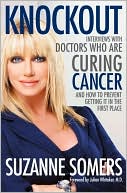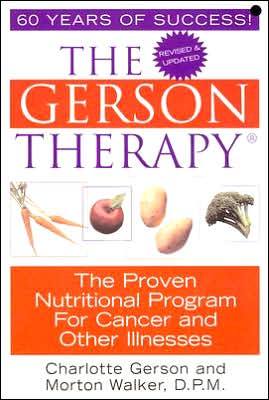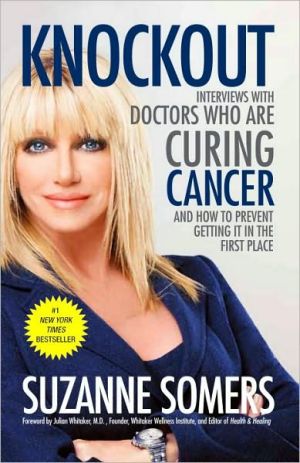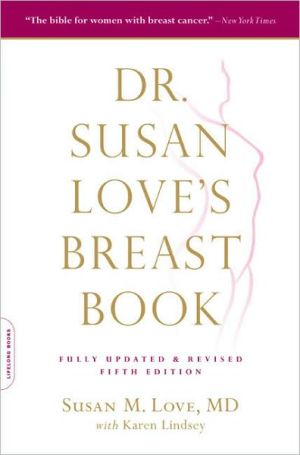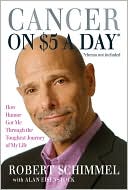Surviving Prostate Cancer: What You Need to Know to Make Informed Decisions
When Dr. E. Fuller Torrey was diagnosed with prostate cancer, none of the books he could find was current enough or comprehensive enough to satisfy his need for information. This book is for the hundreds of thousands of other men who each year receive the same frightening diagnosis. It is the book Dr. Torrey wished he had when he was facing the countless questions that a man with prostate cancer, and his family and friends, all confront.\ Complete, up-to-date, and readable, the book explains...
Search in google:
When Dr. E. Fuller Torrey was diagnosed with prostate cancer, none of the books he could find was current enough or comprehensive enough to satisfy his need for information. This book is for the hundreds of thousands of other men who each year receive the same frightening diagnosis. It is the book Dr. Torrey wished he had when he was facing the countless questions that a man with prostate cancer, and his family and friends, all confront.Complete, up-to-date, and readable, the book explains how to come to terms with the diagnosis of prostate cancer, evaluate the severity of the disease, and assess the variety of treatment options and their complications. Many chapters provide information other books barely consider, such as a full discussion of the causes of prostate cancer and an evaluation of other books on the subject. Also included is a summary of the most useful Web sites.The author mixes his personal experience with factual material, and he maintains a reassuring sense of humor. His advice is practical, with dozens of tips and lists including “Ten Steps to Sanity for Men Recently Diagnosed with Prostate Cancer.” With Dr. Torrey’s book in hand, readers can now tackle all the important decisions about prostate cancer, confident in having the most accurate and complete information available. Library Journal After Torrey (research psychiatrist & associate director for laboratory research, Stanley Medical Research Inst.; Surviving Schizophrenia) was diagnosed with prostate cancer in 2004, his top priority was educating himself about the disease so that he could make informed decisions about treatment options. Much of what he found was outdated, contradictory, or incorrect, so he set out to write a book that would answer the questions he and other men have about this condition. Fuller's comprehensive guide describes his own medical and personal experiences while offering detailed explanations of diagnostic and staging procedures, treatment options, potential complications, recurrence, risk factors, possible causes, and other essential topics backed with numerous references to the professional literature. Matter-of-fact discussions about such sensitive issues as sexuality, impotence, incontinence, and the value of support systems are lightened by cartoon illustrations, "prostate trivia," quotes from other men with the disease, and a comprehensive annotated list of books and web sites that will appeal to both male and female readers. Despite its occasional lapses into medical jargon, this is an essential purchase for consumer health collections, along with Peter T. Scardino and Judith Kelman's Dr. Peter Scardino's Prostate Book and Sheldon Marks's Prostate & Cancer. Karen McNally Bensing, Benjamin Rose Lib., Cleveland Copyright 2006 Reed Business Information.
Surviving Prostate Cancer\ What You Need to Know to Make Informed Decisions \ \ By E. FULLER TORREY \ YALE UNIVERSITY PRESS\ Copyright © 2006 E. Fuller Torrey, M.D.\ All right reserved.\ ISBN: 978-0-300-11640-3 \ \ \ Chapter One\ On Being Diagnosed \ In the timeline of our memories, major tragedies stand out as spikes. Most people remember clearly what they were doing when they learned that hijacked airliners had crashed into the World Trade Center. Those of us who are old enough can pinpoint precisely where we were when we heard that President Kennedy had been shot. Being diagnosed with prostate cancer is comparable.\ I was sitting at my desk at the Stanley Medical Research Institute at 10 A.M. on May 4, 2004. The immediate problem was how to persuade research staff members who do not like one another to work together. I was not expecting the call, because my urologist had said the pathology report after my biopsy would take seven to ten days to compile, and this was only day six.\ The arrival of the call did not unduly alarm me-at first-because I was reasonably certain that the lump in my prostate was benign and the biopsy would be negative. My prostate specific antigen (PSA) was only 3.3, well within the normal range, and the urologist had not seen any suspicious-looking areas on ultrasound at the time of the biopsy. Besides, I was ahealthy 66 years old and planning to live at least twenty more years. I had only recently acquired a few harbingers of old age: forgetting names, a diminished urinary stream, and plaques on the skin. And I hadn't yet passed the definitive landmark of the aged: sending obituaries of old friends to other old friends. Cancer was not something I was supposed to get; cancer was for other people. As one man put it: "Prostate cancer was as remote from the possibilities I imagined for myself as a voyage to the moon."\ The urologist did not preface it as "bad news," but announced in a straightforward way that the biopsy had been positive, that I had cancer in three of the nine cores (samples) taken during the biopsy, and that the Gleason score was 7. In an effort to wrap my mind around this meteor that had just broken through the roof and landed on my desk, I asked what the Gleason score meant. The only Gleason I knew was old-time comedian Jackie Gleason, but I doubted he had anything to do with prostate cancer. I also wondered to myself why I had not done any reading on prostate cancer, so that I could interpret Gleason scores and numbers of positive cores, but then remembered that I had been virtually certain I didn't have it, so why waste my time?\ A Gleason 7, he said, was an "intermediate" stage of cancer. It meant that the cells were not as benign as a Gleason 4, 5, or 6 but not as malignant as an 8, 9, or 10. I did not like the sound of "intermediate"; it reminded me of the ITLITL I had gotten in intermediate algebra. I also remembered all too clearly from my histology course in medical school what "intermediate" cancer cells looked like under a microscope. They were ugly and misshapen, not as bad as the grossly deformed cells that would qualify as Gleason 9 or 10, but certainly not to be confused with normal, orderly-looking cells. And the urologist was telling me that the ugly cells were inside me, now, as I sat at my desk. Unbelievable. I was deeply resentful and felt that I had been surreptitiously violated.\ The remainder of the workday had an illusory quality. I called my wife, but said nothing to anyone else. I needed first to understand the news myself. My strongest memories of the day are of listening to other people complain about things and being sorely tempted to cut them off, saying, "Why are you complaining, I've got cancer!" In the late afternoon, I listened as a research colleague wallowed in his personal and professional woes for almost an hour. I wondered briefly whether, if I strangled him, a jury would find me not guilty because of mitigating circumstances. Then, driving home, I got caught in the worst traffic jam I had encountered in months. Sitting there, I thought of Job. "Man is born to trouble, as the sparks fly upward," it was written. This had to be the archetypal bad day.\ My immediate task was to learn as much as I could about prostate cancer and my options for treatment. I realized that I, a trained physician, knew almost nothing about the prostate. It appeared to be, in fact, the most obscure and least interesting organ in the body. In anatomy class, my group of four students had had a female cadaver to dissect, while the group at the next table had had a male. Our instructor had told us to change tables periodically so that we would understand the anatomy of both sexes. It hadn't happened. Our almost all-male class had a personal as well as a professional interest in female anatomy and, more often than not, eight of us were working at our table. I'm not sure I even saw a prostate.\ How long did I have to make a decision? One book on prostate cancer advised you to "commit to a therapeutic strategy within about three to six months after you're diagnosed," but sooner if your cancer is "large and high grade." One study reported that delays in treatment of more than three months increased chances of recurrence ten years later. Another study found that prostate cancers for which treatment was begun an average of two months after diagnosis did not have an increase in recurrence three years later. A large 2005 study was the most reassuring, finding that surgical delays of up to a year after biopsy did not increase chances of recurrence five years later; therefore, "men who wait several months after biopsy before undergoing RP [surgery] are not jeopardizing their probability of cure." This lack of professional consensus on important prostate cancer issues would, I would soon discover, turn out to be common.\ In general, I am neither laid back nor indecisive, and I found that with cancer growing inside of me, all sense of leisure disappeared. Despite reported assurances that prostate cancer is slow growing, I heard only the word growing, not the word slow. Each day that passed meant that my cancer had grown, and perhaps spread. One day it would be contained within the prostate gland and perhaps curable, but there would come a day when it would not be. Which day would that be?\ It seemed obvious that the thing I needed most was accurate information. I found myself identifying with retired general Norman Schwarzkopf, who, on being diagnosed with prostate cancer, said: "For me it was like war. First thing you do is learn about the enemy." As a researcher, I had dozens of questions I wanted answered, taking into consideration all available studies. As a person with cancer, I wanted them all answered yesterday.\ My search of books and professional papers told me that, according to the American Cancer Society, I was one of 230,110 men in 2004 who were being diagnosed with prostate cancer. Discouragingly, that number had not changed much in recent years. It meant that 630 men were being diagnosed every day, 26 every hour, 1 every 2.3 minutes, Sundays and holidays included. Two hundred thirty thousand, one hundred ten men is equivalent to the entire male and female population of Danbury, Connecticut, or Olympia, Washington. I had been in Danbury and Olympia, and that seemed like a lot of people. I also learned that 1.6 million American men currently have, or have had, prostate cancer-which is more than the metropolitan population of Columbus, Memphis, Milwaukee, Sacramento, or San Antonio. Misery loves company, but having all that company didn't make me feel any better.\ My reading also informed me that I had joined the ranks of some notable men who have had prostate cancer, including athletes such as Stan Musial, Arnold Palmer, and Len Dawson, and political leaders such as Bob Dole and Rudy Giuliani. Even Andrew von Eschenbach, director of the National Cancer Institute from 2002 to 2005, has had prostate cancer, and that didn't seem promising. All these men were members of the Prostate Cancer Club. Joining such a club provided little consolation-good grief, I had not even applied for membership. I was even more discouraged by the list of former club members, now deceased. It included educated, important, and wealthy men with access to the best available medical resources. The most disheartening name on the list was that of Willet Whitmore, who had been chief of urology at Memorial Sloan-Kettering Cancer Center and regarded as one of the nation's experts on prostate cancer.\ Ultimately, my search for information about prostate cancer was disappointing on three counts. First, I was appalled to learn how little was known with certainty about the causes, natural course, and the relative merits of various treatment options. Hadn't President Nixon declared war on cancer more than thirty years ago? What had my colleagues been doing all this time?\ Second, the most useful information that was available was scattered in various professional papers, books, and websites. Much of it was out of date and contradictory, and some was factually wrong. Moreover, prominent urologists strongly disagreed with one another, publicly and not always politely, thus giving the appearance (ironic, given their profession) of an adolescent urinating contest. If I, as a trained medical professional, was having trouble sorting it out and deciding what to do, what must nonprofessionals experience?\ Finally, I was surprised to realize that I was the person who was expected to assess the treatment options and decide which one to select. I had grown up in an era when doctors usually made strong recommendations. Now, as noted by the New York Times, patients are awash in information, but "many find the job of being a modern patient, with its slog through medical uncertainty, to be lonely, frightening, and overwhelming." Despite having an extremely supportive wife, an excellent internist and urologist, and many highly knowledgeable medical friends, I felt very much alone with my decision.\ This book, then, is the book I wish had been available to me when I was diagnosed with prostate cancer. I hope it will lighten the load for other men who receive the same diagnosis.\ Chapter Two\ How Serious Is Your Cancer? \ Several questions immediately came to mind on the day I was diagnosed with prostate cancer. How serious is it? Is it likely to kill me? If so, when? This chapter provides information you need to begin answering such questions. Those who wish to skip the more technical discussions will find a summary at the end of the chapter.\ Prostate cancer is cancer. It affects the walnut-sized gland that sits beneath the bladder and contributes some of the fluid making up the semen; a detailed description of the prostate can be found in Appendix A. Prostate cancer should not be confused with benign prostatic hypertrophy (BPH), the other common-indeed, almost universal-prostate affliction of older men. For benign prostatic hypertrophy, the operant word is benign. It is an enlargement of the prostate that can cause symptoms such as frequency (having to urinate often), urgency (difficulty in holding your urine), a weak flow, and starting and stopping of the flow. Benign prostatic hypertrophy can be treated with medications or surgery. Sometimes, in the course of surgery for BPH, it is discovered incidentally that the enlarged prostate has cancer as well, but the two conditions are unrelated.\ The following discussion assumes that the type of prostate cancer with which you have been diagnosed is an adenocarcinoma. More than 95 percent of all prostate cancers are of this type. The other 5 percent include small cell, squamous cell, sarcomas, and other rare types; all tend to be more aggressive and to have worse prognoses than adenocarcinomas.\ The three most widely used indicators of severity in men with newly diagnosed prostate cancer are total prostate specific antigen (PSA) level; whether the cancer can be felt on digital rectal exam (often abbreviated as DRE) and an estimate of the cancer volume; and the appearance of the cancer cells obtained by biopsy (Gleason score). Other indicators of severity are not as widely used but may also be very useful; these are described below.\ WHAT IS YOUR PSA?\ Prostate specific antigen is a protein produced by cells in the prostate and, in very small amounts, by cells elsewhere in the body. PSA was discovered in 1979 and became widely used as a measure of prostate disease in the late 1980s. It is increased in most cases of prostate cancer, when the prostate is enlarged by benign prostatic hypertrophy and by inflammation of the prostate (prostatitis). Thus, PSA is a general measure of prostate pathology and is not specific for cancer.\ Orgasm and ejaculation may increase PSA, and for this reason men are advised not to ejaculate for two days prior to having a PSA test. The level may also be elevated by massaging the prostate, as occurs during treatment for prostatitis, but should not be elevated by a normal digital rectal exam. There have been claims that vigorous bicycle and motorcycle riding may increase PSA by putting seat pressure on the prostate, but other studies do not agree. PSA is also partially determined by one's genes, so some men have higher PSA levels on a genetic basis alone. Conversely, PSA levels may be decreased in men who are obese and in men who are taking finasteride (Proscar) for BPH or finasteride (Propecia) to prevent baldness. Proscar and Propecia are the same drug, but Proscar contains a higher dose of finasteride (5 mg) than Propecia (1 mg). All these factors need to be taken into account when evaluating PSA level.\ There is little agreement on the normal PSA level. However, there is agreement on one fact: PSA is a continuum, and the lower it is, the better off you are. Since most men's prostates increase in size as they age, what is considered to be a normal PSA level increases with age. A level of 4 nanograms per milliliter of serum (hereafter written as PSA 4) has traditionally been regarded as the upper limit of normal, but increasingly urologists are using age-corrected upper limits (see box). The most important aspect of PSA, however, is the fact that it is a continuum, not positive or negative like a pregnancy test. Thus, there is virtually no difference between a PSA of 3.9 and 4.1, but a vast difference between 3.9 and 0.9.\ Approximately 85 percent of men with prostate cancer have PSA levels higher than 4. However, that means that 15 percent of men with prostate cancer have PSA levels lower than 4. For example, General Schwarzkopf had a PSA of only 1.2 when he was diagnosed with prostate cancer. My own PSA level when I was diagnosed was 3.3, well within normal limits for a 66-year-old man. Well-described cases exist in which men with PSA levels of less than 1.0 have prostate cancers that have already spread to their lymph nodes and bones; fortunately, such cases are unusual.\ If your PSA is elevated, what are the chances that you have prostate cancer? If your PSA is between 4 and 10, the likelihood is about 25 percent. The majority of such elevations are caused by benign prostatic hypertrophy or by infections of the prostate. If your PSA is more than 10, the chances of your having cancer are over 50 percent. If your PSA is greater than 50, not only do you probably have cancer but it is likely to have already spread beyond the prostate. Charles Williams, in his book That Black Men Might Live, reveals that his PSA at the time of diagnosis was 172. In cases of metastatic disease in which the cancer has spread widely throughout the body, PSA levels can go higher than 1,000.\ (Continues...)\ \ \ \ \ Excerpted from Surviving Prostate Cancer by E. FULLER TORREY Copyright © 2006 by E. Fuller Torrey, M.D.. Excerpted by permission.\ All rights reserved. No part of this excerpt may be reproduced or reprinted without permission in writing from the publisher.\ Excerpts are provided by Dial-A-Book Inc. solely for the personal use of visitors to this web site. \ \
Acknowledgments xiAbbreviations xiiiOn Being Diagnosed 1How Serious Is Your Cancer? 11What Is Your PSA? 12Is Your Cancer Palpable? 15What Is Your Gleason Score? 18Additional Predictors of Severity 24Surgical Treatment 27Who Are Good Candidates? 28The Procedure 29Complications 39Outcome 42Radiation Treatment 46Who Are Good Candidates? 48The Procedure 51Seed Therapy 51Beam Radiation 54Complications 55Outcome 59Hormone Treatment 67Who Are Good Candidates? 68The Procedure 69Complications 72Outcome 76Cryotherapy 78Who Are Good Candidates? 78The Procedure 79Complications 79Outcome 80Alternative and Experimental Therapies 81Herbal Therapies 82PC-SPES: ACautionary Tale 85Experimental Treatments 87Treatment Decisions 89Watchful Waiting 90Ten Factors to Consider 95Advantages and Disadvantages of Treatment Options 110How I Made My Decisions 115Your Support System 118Yourself 118Family and Friends 124Coworkers and Business Colleagues 128Support Groups 130Major Complications and Their Treatment 132Urinary Incontinence: The Problem 133Urinary Incontinence: The Solutions 135Impotence: The Problem 140Impotence: The Solutions 144What Happens if the Cancer Spreads or Comes Back? 152Will It Kill Me, and if So, When? 153Treatment Options for Recurrent Cancer 159Weighing Quantity versus Quality of Life 164What Is Known About the Causes? 169Clues 169Genes 175Viruses and Other Infectious Agents 177Sexual Activity 178Hormones 180Dietary Factors 181Other Possibilities 183Summary of Causes 185Factors That May Prevent Emergence or Recurrence 187Dietary Factors 188Vitamins and Minerals 194Medications 195Lifestyle Changes 197So What Should You Do? 198Science and Politics 199The National Cancer Institute 200The Prostate Cancer Research Program 201Michael Milken's Prostate Cancer Foundation 202The National Prostate Cancer Coalition 204Other Players 205Advice for Men Who Do Not Have Prostate Cancer 208Should I Be Tested? 208Biopsies 212Ten Recommendations 214Future Research 216The Anatomy and Function of the Prostate Gland 219Evaluation of Books About Prostate Cancer 224Useful Websites on Prostate Cancer 235Notes 241Index 167
\ Library JournalAfter Torrey (research psychiatrist & associate director for laboratory research, Stanley Medical Research Inst.; Surviving Schizophrenia) was diagnosed with prostate cancer in 2004, his top priority was educating himself about the disease so that he could make informed decisions about treatment options. Much of what he found was outdated, contradictory, or incorrect, so he set out to write a book that would answer the questions he and other men have about this condition. Fuller's comprehensive guide describes his own medical and personal experiences while offering detailed explanations of diagnostic and staging procedures, treatment options, potential complications, recurrence, risk factors, possible causes, and other essential topics backed with numerous references to the professional literature. Matter-of-fact discussions about such sensitive issues as sexuality, impotence, incontinence, and the value of support systems are lightened by cartoon illustrations, "prostate trivia," quotes from other men with the disease, and a comprehensive annotated list of books and web sites that will appeal to both male and female readers. Despite its occasional lapses into medical jargon, this is an essential purchase for consumer health collections, along with Peter T. Scardino and Judith Kelman's Dr. Peter Scardino's Prostate Book and Sheldon Marks's Prostate & Cancer. Karen McNally Bensing, Benjamin Rose Lib., Cleveland Copyright 2006 Reed Business Information.\ \

